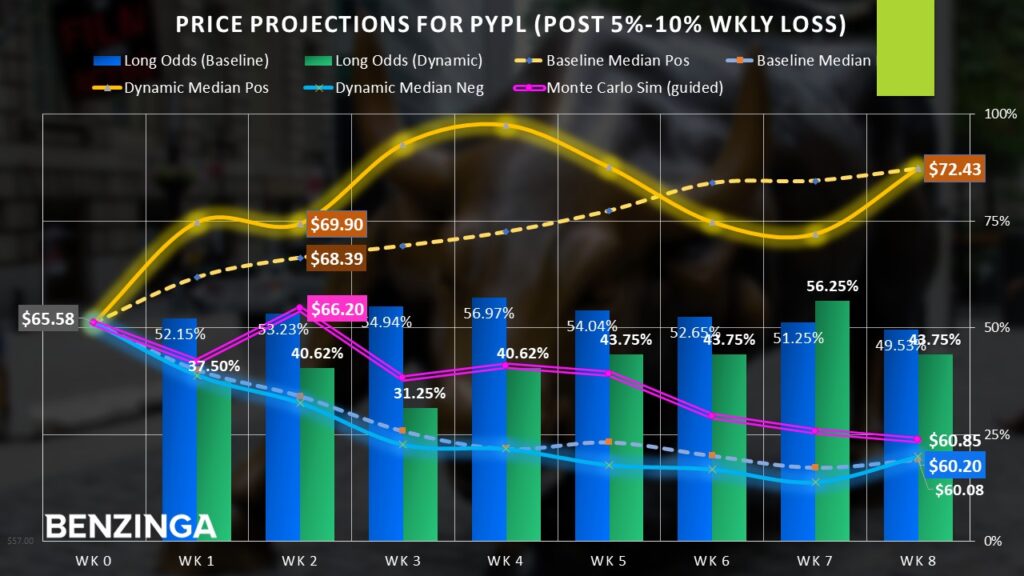Options Corner: PayPal Bulls Are Aiming To Buy Now, Pop Later
At first glance, the narrative for financial technology platform
Nevertheless, it's also fair to point out that because of the subsequent volatility in
It's worth pointing out that currently, the analysts' rating score for
See Also: Trump Gets Fawning Praise From Pro-Cannabis PAC But He’s Not Returning The Sentiment
Fundamentally, the upgrades reflect booming demand for Buy Now, Pay Later (BNPL) services. According to the
Put another way, while financial pressures certainly cloud the broader economy, modern consumers are finding ways to adapt.
The Smart Money Sweeps Into Stock Options
Effectively a market within a market, the options arena provides valuable intelligence to retail investors — even if they're not interested in trading these derivative contracts. Since mostly sophisticated market participants utilize options, unusual activity is always worth monitoring. And within this category, sweeps are especially significant.
By definition, sweeps are large orders designed to be executed immediately. Further, these orders are split across multiple exchanges simultaneously to access the best available prices. The takeaway with sweeps is that they are market orders, not limit orders. In other words, the emphasis is on urgency and getting into position quickly rather than negotiating for the best entry point.
Notably, the whales appear to be sensing an opportunity with
Stated simply, institutional players appear to be betting that PayPal’s stock will rise materially above
Now, one area of concern is in the statistical realm. Using pricing data from
 <figcaption class="wp-element-caption">Image by author</figcaption></figure>
<figcaption class="wp-element-caption">Image by author</figcaption></figure>
Investors typically shy away from the dips. That's significant because
A Tempting Trade On Tap
In the aforementioned call sweep, the trader (or traders) bought the
As such, aggressive followers of the smart money may consider the 66/67 bull call spread for the options chain expiring
Should the stock hit or exceed the short strike price of
Now Read:
- Tesla Q1 Deliveries Preview: Analysts Forecast 377K, But Kalshi Traders Predict A Miss
Image: Shutterstock
Related News
-
Taiwan unveils $2.7 billion in help for companies to deal with US tariffs
Reuters - 11 minutes ago
-
Where Five9 Stands With Analysts
Benzinga - 50 minutes ago
-
Taiwan unveils $2.7 billion in help for companies to deal with US tariffs
Reuters - 5:21 AM ET 4/4/2025
-
Intel, TSMC tentatively agree to form chipmaking joint venture, the Information reports
Reuters - 2:59 PM ET 4/3/2025
-
Intel, TSMC tentatively agree to form chipmaking joint venture, Information reports
Reuters - 2:56 PM ET 4/3/2025
-
Research Alert: Teradyne - Maintaining Sell And Lowering Estimates Amid Tariff-related Uncertainty
MT Newswires - 2:55 PM ET 4/3/2025
-
A Glimpse Into The Expert Outlook On Credo Technology Group Through 9 Analysts
Benzinga - 2:06 PM ET 4/3/2025






